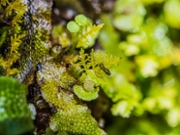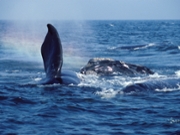|
|
 
| |
 |
| (Little Dinosaur/Getty Images) |
Moss spores have demonstrated remarkable resilience by surviving nine months on the exterior of the International Space Station, with over 80% remaining viable for reproduction upon return to Earth, according to a study in iScience. The research found that the moss Physcomitrium patens endured extreme conditions such as vacuum, microgravity and temperature fluctuations, although ultraviolet light caused some damage. |
|
|
|
|
Flow automatically syncs classes, rosters, assignments, and grades between your Student Information System and Learning Management System. No more manual updates or duplicate work. Learn more about Flow. |
|
|
|
| ADVERTISEMENT |  |
|
 
Researchers have unraveled the mystery behind the "Diamond Ring," a 20-light-year-wide ring of dust and gas in the constellation Cygnus, according to a study in Astronomy and Astrophysics. Previously thought to be a spherical bubble, the structure is actually a flat ring formed in a thin, slab-like cloud of gas. This discovery, made using data from the SOFIA observatory, suggests that such environments may be more common than previously believed.
| Full Story: Space (11/21) |
|
|
Melting sea ice in the Arctic and Antarctic is significantly altering ocean currents, with a study showing that thinner ice allows winds to drive stronger mesoscale currents, which affects the distribution of heat, nutrients and pollutants. The study, published in Nature Climate Change, indicates that these changes could disrupt marine ecosystems and increase the accumulation of microplastics in polar regions.
| Full Story: Earth (11/21) |
|
|
| |
 |
| (VW Pics/Getty Images) |
Researchers are using drones to collect exhaled droplets from critically endangered North Atlantic right whales to assess their health without stressing the animals. A study published in The ISME Journal found a link between respiratory microbes and the whales' body condition, and collecting exhalations with drones is a noninvasive way to monitor whale health and potentially improve conservation efforts. |
|
A study published in Nature Communications finds that by 2100, rising sea levels could inundate up to 5,500 hazardous sites in the US, threatening to release dangerous contaminants into nearby areas. These sites include wastewater treatment facilities, refineries, power plants and fossil fuel ports. The authors warn that such flooding could expose communities to toxic chemicals and bacteria, posing significant public health risks. |
|
US families with children who had vision impairment were 71% more likely to experience food insecurity, when compared with families who did not have children with vision impairments, according to a study published in the American Journal of Ophthalmology. Data from the National Survey of Children's Health showed this link remained mostly constant across demographic groups, household income, parental education or the age of the child. |
|
A review published in the journal Frontiers in Nutrition highlights evidence that the Dietary Approaches to Stop Hypertension diet may reduce complications related to Type 2 diabetes. The diet emphasizes fruits, vegetables, whole grains and low-fat dairy while limiting sodium and saturated fats. |
|
|
|
|
Be at the heart of retail transformation at Shoptalk Spring (Mar 24–26 2026, Las Vegas). Network with 10,000+ leaders, learn from 200+ innovative speakers, and find the ideas and partnerships that will drive your business forward in today's fast-moving retail world. Get ticket. |
|
|
|
| ADVERTISEMENT |  |
|
 
|
The University of Cincinnati received a $985,000 NIH grant to test Healthy Eating for My Infant, a community-based program aimed at preventing obesity among infants from low-income families. The program, developed with Cincinnati Children's Hospital and Every Child Succeeds, includes monthly home visits by health behavior coaches, grocery delivery and peer counseling.
|
|
|
|
|
Salesforce integrations are powerful—and exposed. Attackers target APIs, abuse OAuth, and inject malicious payloads. On December 3rd at 3PM EST, join Salesforce and Veeam for a webinar on building secure, adaptive systems that safeguard customer data even when threats break through. RSVP today! |
|
|
|
|
|
 
 | | |
